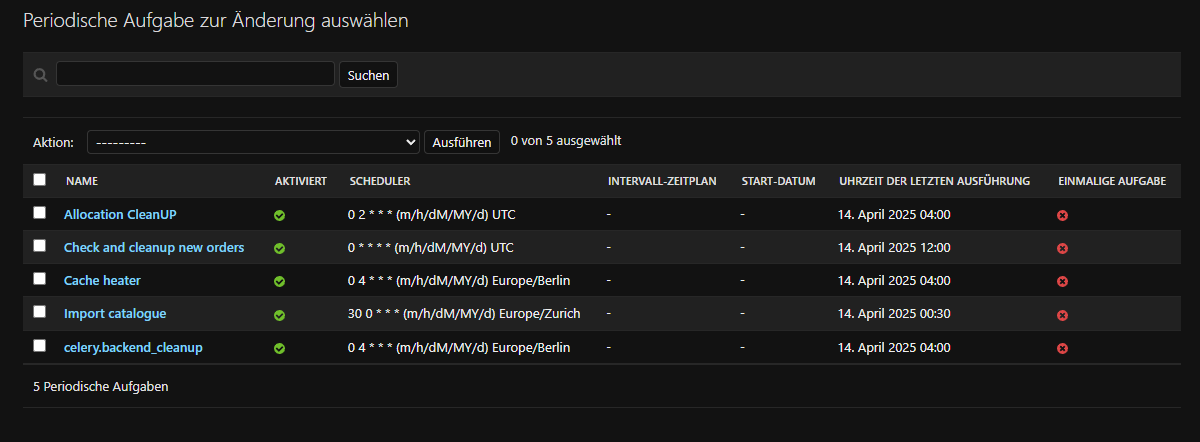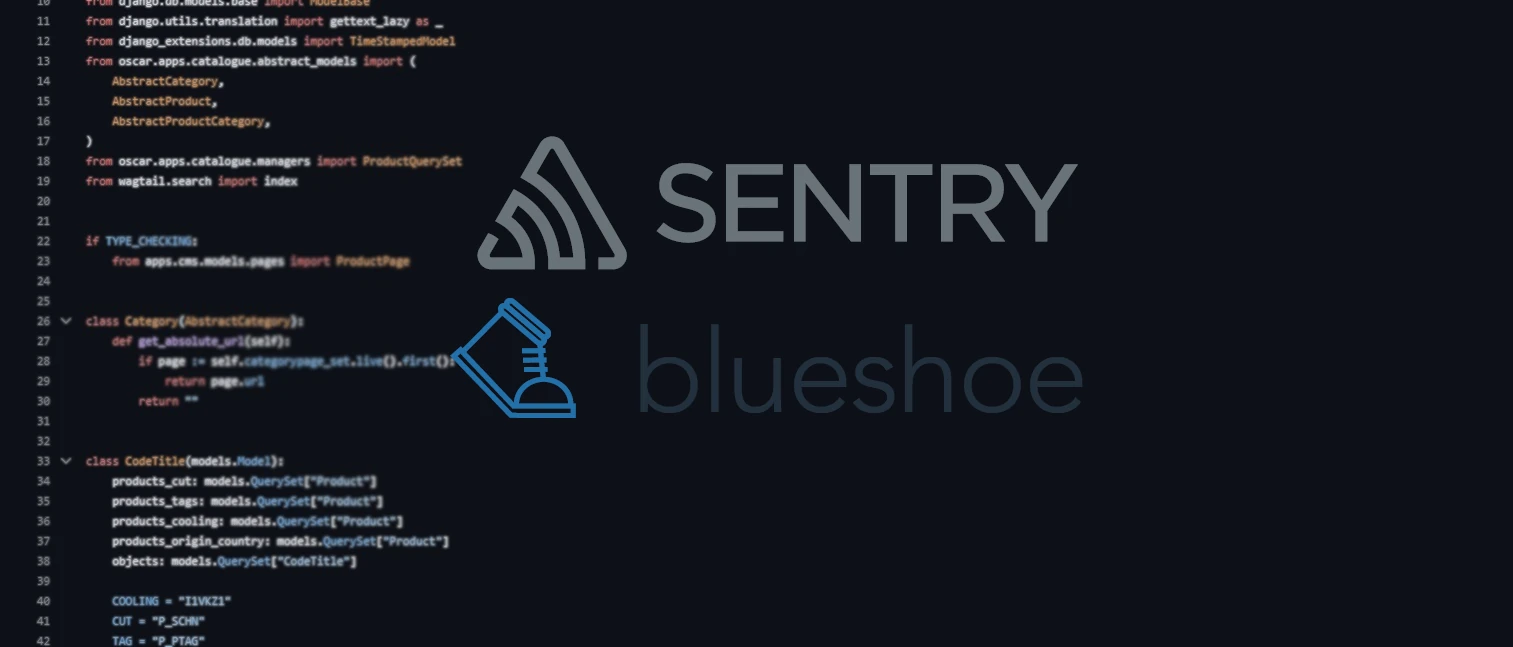Table of Contents
- Why Django-Celery?
- How to set up Celery
- This is what Celery tasks look like in Django
- Periodic tasks with django-celery-beat
- Celery in production
- Frequent stumbling blocks
- Best practices for clean tasks
- Conclusion
Meet the Author
2025-07-15
Everything you need to know about Django-CeleryMastering Django Celery: Managing asynchronous tasks like a pro
Integrating Celery into your Django application enables powerful, asynchronous task processing. Learn how to effectively set up Django-Celery and optimise it for production environments to make your application stable and performant.
Have you ever experienced this? An order comes in - and suddenly your Django app hangs because emails are being sent or PDFs are being generated? This is where Django Celery comes into play. The integration into your Django application enables powerful, asynchronous task processing. Learn how to effectively set up Django-Celery and optimise it for production environments to make your application stable and performant.
Why Django-Celery?
Many tasks in web applications do not need to be processed synchronously. These include, for example, sending emails, generating PDFs or processing large amounts of data. This is exactly where Celery comes into play: it allows you to perform these tasks in the background (asynchronously).
Typical use cases for Celery in Django:
- Sending emails
- Image processing
- External API calls
- Database cleanup or analysis
- Recurring tasks (e.g. report generation with celery beat)
How to set up Celery
1. installation of the required packages
pip install celery redis
If you need periodic tasks:
pip install django-celery-beat
2. Prepare project structure
Create a file celery.py in your project folder:
# myproject/celery.py
import os
from celery import Celery
os.environ.setdefault("DJANGO_SETTINGS_MODULE", "myproject.settings")
app = Celery("myproject")
app.config_from_object("django.conf:settings", namespace="CELERY")
app.autodiscover_tasks()
In __init__.py:
from .celery import app as celery_app
__all__ = ["celery_app"]
3. Example configuration in settings.py
CELERY_BROKER_URL = "redis://localhost:6379/0"
CELERY_RESULT_BACKEND = "redis://localhost:6379/0"
CELERY_ACCEPT_CONTENT = ["json"]
CELERY_TASK_SERIALIZER = "json"
Test your setup with a simple task.
This is what Celery tasks look like in Django
1. Simple task
@shared_task
def send_email_to_user(user_id):
print(f"E-Mail to user {user_id} sent")
This is now called up with :
send_email_to_user.delay(user.id)
.delay() vs. .apply_async()
.delay()is a shortcut for.apply_async()with standard parameters.- With
.apply_async()you can usecountdown,etaorretry, for example.
2. More complex tasks with transactions and logging
@shared_task
def run_customer_basket_groups_processing(basket_id):
from shop.order.processing import BasketProcessor
from shop.models import Basket
from shop.exceptions import ReachedAdvertisingMediumQuotaWarning
from django.db import transaction
import logging
logger = logging.getLogger(__name__)
basket = Basket.objects.get(pk=basket_id)
try:
if basket.user.groups.exists():
with transaction.atomic():
for cbg in basket.customerbasketgroups.all():
user = cbg.consignee.user
customer_basket = Basket.objects.create(
user=user,
field_staff=basket.user,
discount=basket.discount,
discount_code=basket.discount_code,
shipment_options=basket.shipment_options
)
customer_basket.add_basket_lines_to_basket(
cbg.basket_lines, as_stock_order=True, check_quotas=False
)
basket_processor = BasketProcessor(basket=customer_basket)
basket_processor.process_basket()
except Exception as e:
logger.error(f"Error when processing basket {basket_id}: {e}")
transaction.atomic() ensures that no half-finished order is created in the event of an error.
Periodic tasks with django-celery-beat
Migrations:
python manage.py migrate
Activate app:
INSTALLED_APPS += ["django_celery_beat"]
Create example task:
from django_celery_beat.models import PeriodicTask, IntervalSchedule
schedule, _ = IntervalSchedule.objects.get_or_create(every=10, period=IntervalSchedule.SECONDS)
PeriodicTask.objects.create(interval=schedule, name="Example Task", task="myapp.tasks.send_email_to_user")
Done! Your first periodic task has been created. This means: Celery calls up the task at this interval - for example, to send a notification or reminder email at regular intervals. This configuration is particularly useful for recurring tasks that are to be triggered on a time-controlled basis.
The admin interface then shows you all the tasks set up with status and schedule - ideal for monitoring and management in live operation.

Celery in production
1. Start Worker
celery -A myproject worker -l info
2. Start 'Beat'
celery -A myproject beat -l info
3. Use deployment tools
- Use Supervisor or systemd for process management.
- Log errors e.g. with Sentry or external tools.
- Implement retries for temporary errors.
Frequent stumbling blocks
- Redis not started →
ConnectionRefusedError .autodiscover_tasks()forgotten → Tasks are not found- Task hangs → Worker not started or deadlock in database
Best practices for clean tasks
- Keep tasks small, fast and repeatable
- Use logging (e.g.
logger.info(),logger.error()) - Plan timeouts and retry logic
- Use
transaction.atomic()for database actions - Use
.apply_async(countdown=...)for scheduled execution
Conclusion
Celery is a powerful tool that can make your Django app more flexible, faster and more robust. Whether simple email tasks or complex order processing - with the right setup and a few best practices, you'll be on the safe side.
Get started now - and bring Django Celery to your app!
























